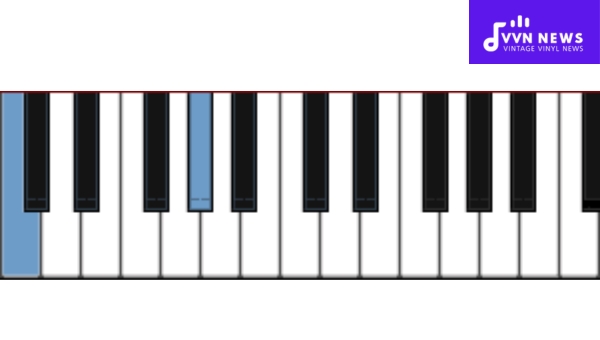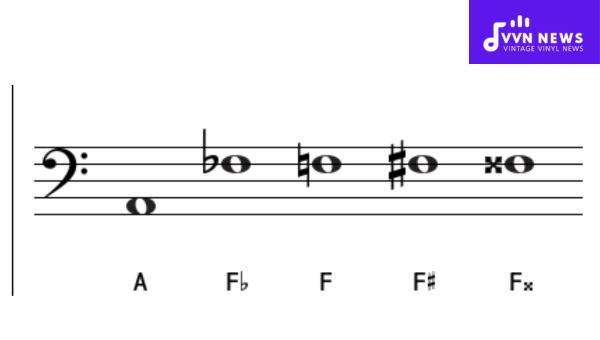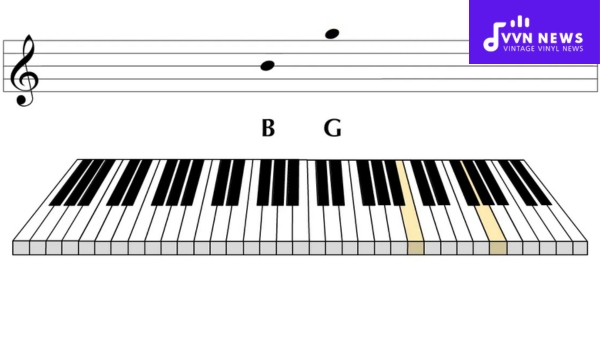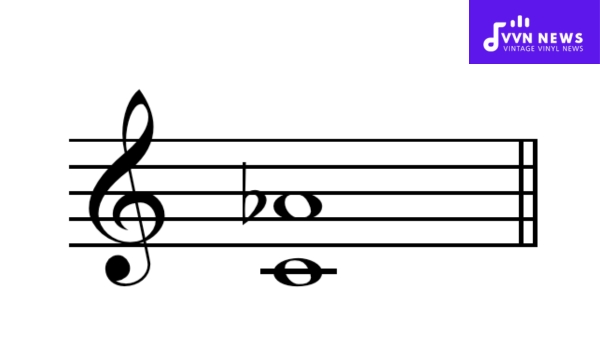Music has an uncanny ability to stir emotions and create a shared experience among listeners. An integral part of this magical process is musical intervals – the steps between two notes.
Among these, one notable interval that boasts of its unique mood-setting role is the minor 6th interval. The concept of minor 6th intervals can initially be a bit formidable.
Once you get a grasp on it, you’ll realize how often it appears in popular music genres and how it contributes to their distinct emotional landscapes.
This interval shouldn’t be an intimidating realm exclusively reserved for music theorists; rather, it’s a valuable asset that any music enthusiast can appreciate and benefit from comprehending.
Let’s embark on an enlightening journey to demystify the intriguing world of minor 6th intervals.
What constitutes a Minor 6th Interval?
A Minor 6th Interval refers to the distance between two notes, specifically nine half-steps or semitones apart.
In scale degrees, it is six steps above the root note. For instance, if your starting note (the tonic) is C, the minor 6th interval would be A flat (Ab). The sound of a Minor 6th interval is dark, and melancholic and instills a sense of tension, often used in Jazz and Blues for its expressive quality.
Importantly, this interval should not be confused with its relative major counterpart—the Major 3rd—that has a completely different sonic character.
Also Read: Phrygian Mode [Adding Exotic Flair To Your Musical Compositions]
What are the features of Minor 6th Intervals?
A Minor 6th interval consists of eight semitones, or ‘half steps’, on the piano.

The inclusion of this particular interval within a melody or harmony can inject a unique and intense flavor into a song, often introducing a sense of melancholy, longing, or mystery.
Mood Enhancer
One of the most prominent features that set Minor 6th intervals apart is their power to enhance mood.
They tend to produce an evocative emotional response often associated with rainy days, lost love, or contemplative moments.
Multiple Appearances
Minor 6th intervals aren’t consigned to just one genre; they’re observed across jazz, classical music, pop, and rock.
These intervals manoeuvre through various musical landscapes adding richness and complexity.
Note Separation
When referring to notes played separately in minor 6th intervals – especially on stringed instruments like guitars – the notes resonate as individual entities yet coexist in flawless harmony creating captivating rhythmic patterns.
Chord Progressions
Minor 6ths play a significant role in chord progressions too. They often serve as passing tones between chords which foster smooth transitions thus contributing to a song’s overall structure and progression.
Fingering on Piano
On the keyboard or piano, your fingering precision becomes essential when playing minor 6ths.
Once you nail down the right finger placements for each set of keys that make up these intervals, playing them will seem more effortless and fluid.
From their role in setting moods to participation in melodic pathways and chord progressions across multiple genres – minor 6ths truly deserve your recognition and practice efforts for all that they bring to enhance your musical palate.
\Also Read: A Sharp Minor Pentatonic Scale [Unique Harmonic Possibilities]
Techniques for identifying Minor 6th Intervals by ear?
Identifying musical intervals plays a paramount role in becoming proficient at playing by ear.
Specifically, the minor 6th interval poses an enchanting, melancholic charm that’s hard to miss once your ears are accustomed to its distinctive sound.
Here are four techniques that will help to sharpen your sonic perception.
Association with Familiar Tunes
The ease of remembering catchy melodies can be harnessed to recognize minor 6th intervals.
Examples might include the opening notes of “The Entertainer” and “Love Story,” which both start with a minor 6th between their initial two notes.
This method of rogue melodies encourages easy recollection during improvisation or composition sessions.
Sonic Spatial Awareness
Creating a sonic spatial map aids in recognizing the relationship between various sounds.
In this context, recognizing the distance between notes in a minor 6th interval, with its eight half steps, brings about familiarity and quicker auditory discernment.
Contextual Listening
The context in which an interval exists can significantly impact its flavor as it interacts with other elements within the piece.
Precisely discerning minor 6ths becomes effortless when we appreciate these dynamic intersections amidst harmonies and melodies.
Continuous Practice with Musical Tools
Employ musical ear training tools designed explicitly for interval recognition practice. Websites like musictheory.net offer excellent exercises specifically for this purpose.
Beyond this, intentional listening extends even when casually engaged in everyday streams of music from radios or playlists.
When you hear a tune that fascinates you—delve deeper; what pulls you could potentially be a captivating minor 6th tugging at your heartstrings!
Also Read: Mastering Chords In A Minor [Improve Your Composition Skills]
Instructions for playing Minor 6th Intervals?
Once you feel accustomed to the sound of a minor 6th interval, it’s time to make your hands familiar with how the interval is played on your instrument.

Step-by-Step Execution
- Pinpointing a Starting Note: The first course of action is to establish a starting point. This could be any note on your chosen instrument – whether it’s C on a piano or F# on a guitar.
- Counting Upward: After choosing the initial note, count up 8 half-steps or semitones. An effortless way to accomplish this is by moving one fret at a time if you’re using a string instrument or one key at a time for keyboard players.
- Playing Together: Now that you’ve identified both notes constituting the minor 6th interval, play them together and pay attention to their harmonic interaction.
Consider practicing several minor 6th intervals in various positions across your instrument, allowing yourself to become regularly exposed to this unique configuration of notes so that it becomes part of your musical muscle memory.
Incorporating Minor 6th Intervals into the Chromatic Scale
The chromatic scale serves as a comprehensive collection of notes within an octave, including all twelve semitones.
Each step is a minor 2nd apart, or a half step in Western music terminology. To locate a minor 6th within this framework, we count eight half steps from the root note.
Imagine you’ve started on an A; your minor 6th interval would then be an F. Now, within the chromatic scale, there are no ‘skips’ in the sequence — every single pitch is represented consecutively.
Because it consists entirely of half steps, there’s a seamless inclusion of intervals like the minor 6th.
Playing or singing through the chromatic scale while highlighting these minor sixths could significantly enhance your auditory recognition.
As with any interval training, repetition is crucial, and systematically spotlighting that eight-semitone leap across various root notes polishes your comprehension and execution of this moody and evocative interval.
Also Read: G Major Blues Scale [Expand Your Harmonic Possibilities]
Songs Featuring Minor 6th Intervals
The minor 6th interval, evocative and complex, often underpins memorable melodies across diverse musical landscapes.

Here are some renowned examples where you can hear this interval in action:
- “The Entertainer” – Scott Joplin
In Joplin’s iconic ragtime classic, the leap from the F to the D-flat in the main theme exemplifies a minor 6th interval, giving the piece its distinctive turn-of-the-century sound. - “Black Orpheus” – Luiz Bonfá
The haunting melody of this bossa nova standard initially ascends via a minor 6th, embodying the song’s melancholic nostalgia. - “Man In The Mirror” – Michael Jackson
Michael Jackson’s introspective anthem features a minor 6th that you can easily identify in the chorus, as Jackson moves from A to F. - “We Are Young” – fun.
Throughout the bridge of this hit song, soaring vocals traverse minor 6th intervals to impart an anthemic sense of youthful defiance.
Each example leverages the minor 6th’s inherent tension and release. It acts like a musical brushstroke: sometimes highlighting emotional depth; other times crafting an escalating narrative culminating in powerful choruses.
It is used sparingly for dramatic effect or woven into the foundation of a melody, its presence is unmistakable for those attuned to its signature sound.
FAQs
What exactly is a minor 6th interval in music?
A minor 6th interval spans eight semitones above the root note. For example, from A to F is a minor 6th.
How can I quickly recognize a minor 6th interval by ear?
To identify a minor 6th, listen for a sound that feels deeper and sadder than a major 6th, often resembling the first two notes of the “The Entertainer” theme.
Can learning minor 6th intervals help me with improvisation?
Absolutely! Minor 6ths can add emotional depth and complexity to your melodies during improvisation.
Are there chords that typically include a minor 6th interval?
Yes, min7♭5 chords (half-diminished) often feature a minor 6th between their root and flattened fifth.
Is there an easy way to locate a minor 6th on the guitar fretboard?
On guitar, you can find a minor 6th by moving up one string and back three frets from your starting note.
Also Read: A Guide Transposing Into The Alto C [Navigate Music Transposition]
Conclusion
Grasping the minor 6th interval is invaluable for your musical journey. This interval extends beyond academic theory, offering a gateway into expressive composition and performance.
Whether dissecting classics or crafting your melodies, recognizing and incorporating this distinctive sound shapes the emotional narrative of music.
Engage with plenty of examples, and you’ll find that identifying minor 6ths becomes second nature. Each step forward enriches your auditory palette – a worthy pursuit for any music aficionado.








